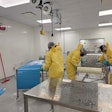In a recent piece, Dana Brooks, president and CEO of the Pet Food Institute, delved into the necessity for updating the current pet food regulatory framework and outlined the Pet Food Institute's endorsement of the PURR Act, along with some fundamental aspects of the bill. It's recommended to review that article for context before proceeding with this one.
This piece aims to address certain misconceptions surrounding the impact of the PURR Act on pet food safety. These misconceptions have arisen from critics who may not fully comprehend the terms of the bill. As a devoted pet owner, I understand the paramount importance of our pets' health and safety. Rest assured, the entire pet food industry shares this sentiment, and we wouldn't endorse legislation that could jeopardize the long and healthy lives of our beloved animals. Ensuring their well-being is our top priority.
Let's take a moment to examine how pet food safety is currently regulated. The Food Safety Modernization Act (FSMA), enacted by Congress in 2011, grants the Food & Drug Administration (FDA) authority to regulate both human and pet food safety. FSMA imposes rigorous regulations concerning food safety that manufacturers must adhere to, which are subject to inspection during routine food safety assessments of facilities. Manufacturers must maintain current Good Manufacturing Practices in and around their facilities to ensure that pet food is handled and produced in a sanitary environment, thus preventing pet food contamination. State regulators often conduct food safety inspections under FSMA, in coordination with the FDA.
Furthermore, pet food manufacturers implement multiple preventive controls to safeguard pet food, including rejecting raw ingredients that fail to meet safety standards and implementing positive release criteria for finished products to control or minimize hazards associated with natural toxins, pathogens, or other contaminants. U.S. pet food manufacturers also apply various processing controls to pet food, such as ensuring food is heated to a safe temperature and monitoring moisture content.
The burning question remains: how will the PURR Act impact pet food safety regulations? The answer is simple—it won't. Under the PURR Act, no aspect of pet food safety regulations or inspections would change. Pet food manufacturers would still be obligated to comply with FSMA and undergo inspections by FDA investigators. State officials will continue to conduct food safety inspections through their own agreements with the FDA. Additionally, state regulators could still remove adulterated pet food from shelves or report misbranded packages to the FDA for investigation.
The aim of the PURR Act is straightforward and limited—to eliminate the disruptive and inconsistent state-by-state label review process and modernize pet food regulation to mirror that of human food. The Pet Food Institute and pet food manufacturers will continue to collaborate closely with state departments of agriculture and regulatory agencies on pertinent issues. Given that the pet food industry serves both national and global markets, operating within an unpredictable 50-state patchwork system is untenable. Pet food manufacturers serve as vital economic drivers in many states and require a consistent and predictable regulatory environment to sustain operations and support the pets, people, and communities they serve.
Let's be unequivocal—pet food safety will always remain our paramount concern. Under the PURR Act, pet owners will have access to the latest science-based nutrition while maintaining confidence that the food they procure for their cherished pets is safe and nutritious.
Stay tuned for our forthcoming article in this series, which will expound upon the benefits of the PURR Act for America's pet owners and pets.













